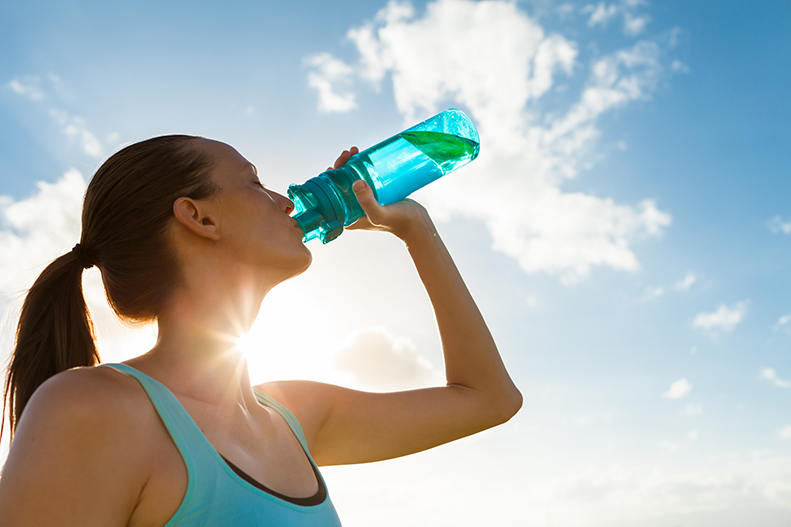The sun, while essential for life, can be a formidable foe when it comes to skin health. Ultraviolet (UV) rays emitted by the sun can cause harmful effects ranging from premature skin aging to skin cancer. As such, understanding the significance of sun protection is crucial in maintaining skin’s vitality and youthfulness. This guide will delve into 12 Tips for Sun Protection of Your Skin. It will not only equip you with the knowledge on choosing the right products and wearing appropriate clothing but also inform you about sun-safe habits and practices that are essential for comprehensive sun protection. These 12 Tips for Sun Protection of Your Skin into your routine and keep your skin healthy under the sun.
1. Understanding SPF

Sunscreen plays a pivotal role in skin protection. Its Sun Protection Factor (SPF) signifies how well it shields your skin against harmful UVB rays, responsible for sunburn and skin cancer. For instance, SPF 30 allows about 3% of UVB rays to hit your skin, providing significantly more protection than SPF 15. It is recommended to use at least SPF 30 for daily activities and SPF 50 for extended outdoor exposure. However, it’s crucial to remember that no sunscreen can block 100% of UV rays. Therefore, it should be used in combination with other protective measures, not as a standalone solution. Understanding SPF is the first step towards effective sun protection.
2. Importance of Broad-Spectrum Protection
While SPF measures protection from UVB rays, broad-spectrum sunscreens are designed to shield you from both UVB and UVA rays. UVA rays penetrate the skin more deeply than UVB, leading to skin aging, wrinkles, and potentially contributing to skin cancer. A sunscreen labeled as ‘Broad Spectrum’ ensures you are protected from the damaging effects of both types of ultraviolet rays. Regardless of the season or weather, these rays can reach your skin, even on cloudy days or through window glass. Therefore, using a broad-spectrum sunscreen daily, with an SPF of at least 30, is a crucial step in a comprehensive approach to protect your skin from sun damage.
Related: Benefits of Using Sunscreen Everyday.
3. Apply Sunscreen Properly

Applying sunscreen correctly is as important as choosing the right one. For optimal protection, apply a generous amount of sunscreen to all exposed areas of the skin 15-30 minutes before heading outdoors to allow it to bind fully. Most people use less than half of the recommended amount, reducing the protective effect. For an adult, around 1 ounce (a shot glass full) is needed for each application. Reapply every 2 hours, or immediately after swimming, sweating, or towel drying. Don’t forget often overlooked spots like ears, feet, back of the hands, and the back of the neck. Remember, even the best sunscreen applied poorly won’t offer the full degree of protection.
Related: 10 Best Sunscreen From Protecting Your Skin.
4. Role of Protective Clothing
Protective clothing serves as a physical barrier between the sun’s harmful rays and your skin. When outdoors during peak sun hours, cover your skin with dark-colored, long-sleeved shirts, and pants made from tightly woven fabric. These can significantly reduce the amount of UV radiation reaching your skin. Additionally, a wide-brimmed hat can shield your face, ears, and neck, while UV-blocking sunglasses protect your eyes and the sensitive skin around them. Nowadays, sun-protective clothing with Ultraviolet Protection Factor (UPF) is also available, offering excellent sun protection. Remember, while clothing doesn’t provide complete sun protection, it is a valuable tool in your sun defense arsenal when used in conjunction with sunscreen and shade.
5. Wearing Sunglasses
Your eyes and the delicate skin surrounding them are extremely sensitive to the sun’s harmful UV rays. Overexposure can lead to cataracts, macular degeneration, and even eyelid skin cancers. Therefore, wearing sunglasses is a crucial part of sun protection. Choose sunglasses that block 100% of both UVA and UVB rays for maximum protection. Larger frames or wrap-around styles offer additional coverage, shielding your eyes and skin from rays coming in from the sides. Remember to wear your sunglasses even on overcast days as UV rays can penetrate clouds. With the right pair of sunglasses, you not only look stylish but also ensure an added layer of defense against sun damage.
6. Boosting Skin Protection with Antioxidant-Rich Foods

Diet plays a crucial role in skin health, and antioxidant-rich foods can provide an additional layer of sun protection. Antioxidants help neutralize harmful free radicals produced by sun exposure, reducing inflammation and cellular damage. Foods high in antioxidants include berries, dark chocolate, nuts, and leafy greens. Additionally, foods rich in beta-carotene (carrots, sweet potatoes) and lycopene (tomatoes, watermelon) can help increase your skin’s natural sun protection. Omega-3 fatty acids found in fatty fish like salmon also have anti-inflammatory properties. While these foods can boost your skin’s resilience against sun damage, they are not a substitute for sunscreens and protective clothing but are a great addition to your sun-protection strategy.
7. Dangers of Tanning Beds
Tanning beds are far from a safe alternative to sunbathing. Contrary to some beliefs, the UV radiation emitted by indoor tanning beds can be much more intense than natural sunlight, leading to premature skin aging and a heightened risk of skin cancers, including deadly melanoma. Tanning is, essentially, your skin’s damage response to excessive UV radiation. The World Health Organization classifies tanning beds in the highest cancer risk category, equating them to substances like tobacco. It’s important to debunk the myth of a safe tan – the only safe tan is a fake tan. Opt for self-tanning creams or sprays instead, but remember, these don’t offer sun protection, so continued use of sunscreen is crucial.
8. Seeking Shade During Peak Sun Hours
Sunlight is most potent between 10 AM and 4 PM, when UV rays are at their peak. Minimizing your skin’s exposure during these hours can significantly reduce your risk of sun damage. If possible, plan your outdoor activities for early morning or late afternoon when the sun is lower in the sky. When outdoors during peak hours, seek shade under trees, canopies, or umbrellas. However, keep in mind that shade doesn’t block all UV radiation – reflected or scattered rays can still reach your skin. Hence, even in shade, continue to protect your skin with sunscreen, protective clothing, and sunglasses for a comprehensive sun defense strategy.
9. Regular Skin Checks
Regular skin checks are crucial for early detection of any changes or abnormalities, including signs of skin cancer. Self-examinations can be done monthly at home. Pay close attention to the size, shape, color, and number of your moles, freckles, and spots. Note any new growths, sores that don’t heal, or changes in the texture or color of your skin. In addition to self-checks, schedule yearly skin examinations with a dermatologist, especially if you have a high risk of skin cancer due to factors like fair skin, sunburn history, or family history of skin cancer. Remember, early detection greatly increases the chances of successful treatment, making these checks an essential part of your skincare routine.
10. Hydration for Sun Protection

Staying hydrated is a less obvious but critical aspect of sun protection. When your body is well-hydrated, your skin is too. Hydrated skin can better withstand sun exposure and recover more quickly from any sun damage that does occur. Drink plenty of water before, during, and after sun exposure to maintain good hydration. Eat a diet rich in fruits and vegetables as they have high water content and are packed with antioxidants, which can protect skin cells from damage caused by the sun’s rays. Remember, though hydration aids in skin health, it doesn’t replace the need for other sun protection measures like wearing sunscreen, protective clothing, and seeking shade.
11. Treat Sunburn Immediately
Sunburn is not just painful and unsightly but also a clear signal that your skin has suffered significant damage from UV rays. Immediate treatment is essential to cool the skin, ease pain, and limit damage. Start by cooling the affected area with cold compresses or cool showers. Apply a gentle moisturizer, preferably one with aloe vera, to soothe the skin. Over-the-counter anti-inflammatories can help with pain and swelling. Stay well-hydrated and rest in a cool, shaded area. While treating sunburn, avoid further sun exposure until the burn has fully healed. Remember, repeated sunburns increase your risk of skin cancer, making sun protection crucial for your skin health.
Related: Effective Home Remedies for Sun Tan Removal.
12. Sun Safety for Kids

Protecting children from the sun’s harmful rays is vital, as sunburns during childhood can dramatically increase the risk of developing skin cancer later in life. Teach them about the importance of sun safety from an early age. Apply a broad-spectrum, water-resistant sunscreen with an SPF of 30 or higher to their skin every two hours and after swimming or sweating. Encourage them to wear sun-protective clothing, wide-brimmed hats, and sunglasses. Limit their sun exposure between 10 AM and 4 PM, when UV rays are strongest, and make sure they play in the shade whenever possible. Remember, good habits formed in childhood often continue into adulthood.
Conclusion
Sun protection is not just a beach day consideration; it’s a daily necessity, regardless of the weather. Even on cloudy days, up to 80% of the sun’s harmful UV rays can penetrate your skin. Incorporating sun protection tips into your daily routine – applying sunscreen, wearing protective clothing, seeking shade, and being mindful of peak UV times – can dramatically reduce your risk of skin damage, skin aging, and most importantly, skin cancer. It’s never too late to start protecting your skin. Remember, every sun-safe action you take contributes to your overall skin health. With consistent effort and mindful habits, effective sun protection can become as automatic as brushing your teeth.


